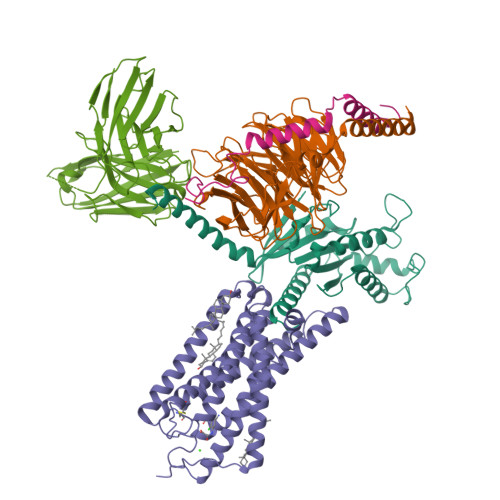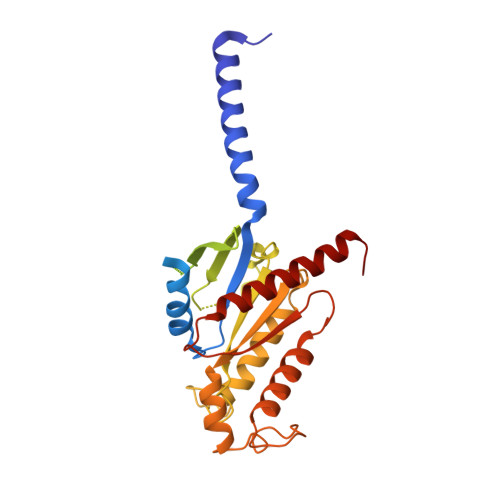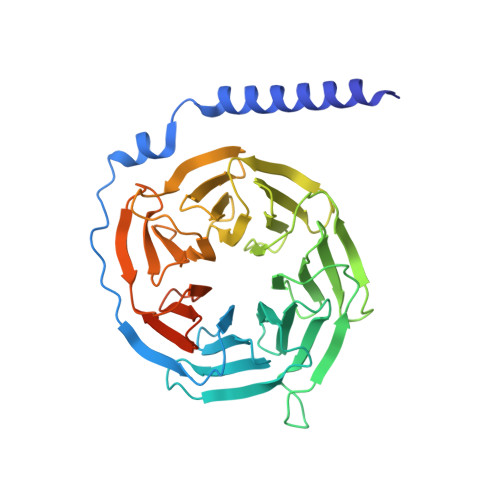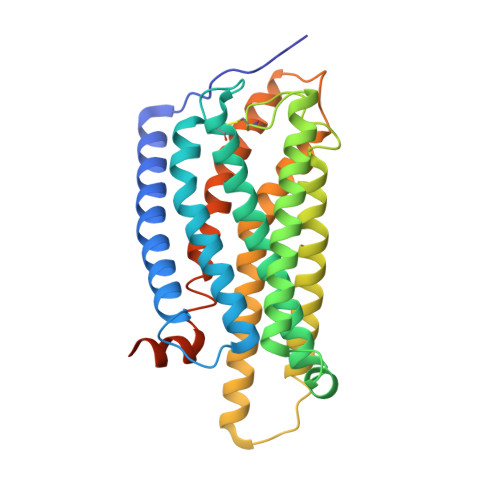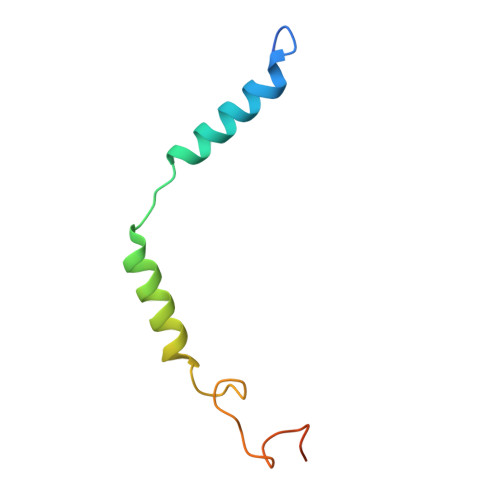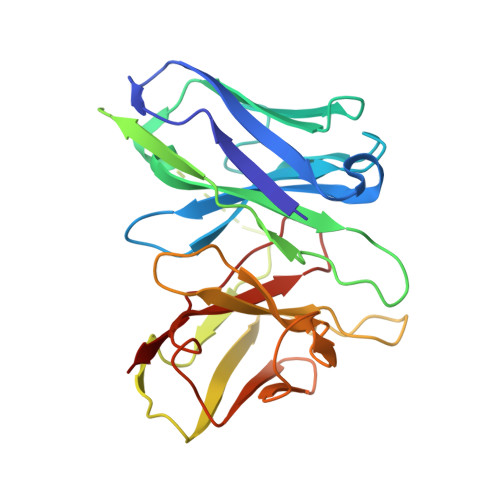Insights into divalent cation regulation and G 13 -coupling of orphan receptor GPR35.
Duan, J., Liu, Q., Yuan, Q., Ji, Y., Zhu, S., Tan, Y., He, X., Xu, Y., Shi, J., Cheng, X., Jiang, H., Eric Xu, H., Jiang, Y.(2022) Cell Discov 8: 135-135
- PubMed: 36543774
- DOI: https://doi.org/10.1038/s41421-022-00499-8
- Primary Citation of Related Structures:
8H8J - PubMed Abstract:
Endogenous ions play important roles in the function and pharmacology of G protein-coupled receptors (GPCRs) with limited atomic evidence. In addition, compared with G protein subtypes G s , G i/o , and G q/11 , insufficient structural evidence is accessible to understand the coupling mechanism of G 12/13 protein by GPCRs. Orphan receptor GPR35, which is predominantly expressed in the gastrointestinal tract and is closely related to inflammatory bowel diseases (IBDs), stands out as a prototypical receptor for investigating ionic modulation and G 13 coupling. Here we report a cryo-electron microscopy structure of G 13 -coupled GPR35 bound to an anti-allergic drug, lodoxamide. This structure reveals a novel divalent cation coordination site and a unique ionic regulatory mode of GPR35 and also presents a highly positively charged binding pocket and the complementary electrostatic ligand recognition mode, which explain the promiscuity of acidic ligand binding by GPR35. Structural comparison of the GPR35-G 13 complex with other G protein subtypes-coupled GPCRs reveals a notable movement of the C-terminus of α5 helix of the Gα 13 subunit towards the receptor core and the least outward displacement of the cytoplasmic end of GPR35 TM6. A featured 'methionine pocket' contributes to the G 13 coupling by GPR35. Together, our findings provide a structural basis for divalent cation modulation, ligand recognition, and subsequent G 13 protein coupling of GPR35 and offer a new opportunity for designing GPR35-targeted drugs for the treatment of IBDs.
Organizational Affiliation:
CAS Key Laboratory of Receptor Research, Center for Structure and Function of Drug Targets, Shanghai Institute of Materia Medica, Chinese Academy of Sciences, Shanghai, China.









